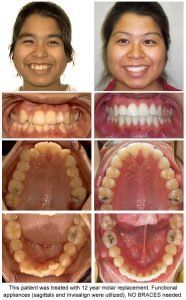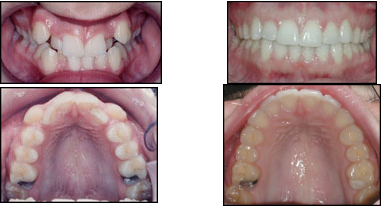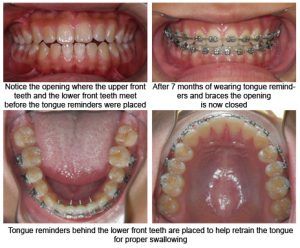Functional Jaw Orthopedics is a term used to describe appliances that orthodontists use to affect the jaw and bone – not just the teeth. Orthodontics is a term associated with movement of individual teeth. Properly combining both techniques helps us to achieve more natural facial contours with a full smile, i.e., more pleasing facial aesthetics. Proper treatment can also lead to healthier temporomandibular joints (jaw joints).
UPPER FRONT TEETH DON’T STICK OUT!
It is a common misconception that protruding upper front teeth need to be pushed back. Twenty years ago, many times bicuspid teeth were extracted and headgears were used to help push the teeth back. The real problem was that the lower jaw needed to come forward. Even in the most severe overbite cases with protruding upper front teeth, the lower jaw (recessive mandible) is the main problem. The upper front teeth may only stick out 1 millimeter. The twin block is a great appliance to correct these problems.
NOTICE HOW THE FUNCTIONAL APPLIANCE BROUGHT THE LOWER JAW FORWARD IN THESE THREE PATIENTS





